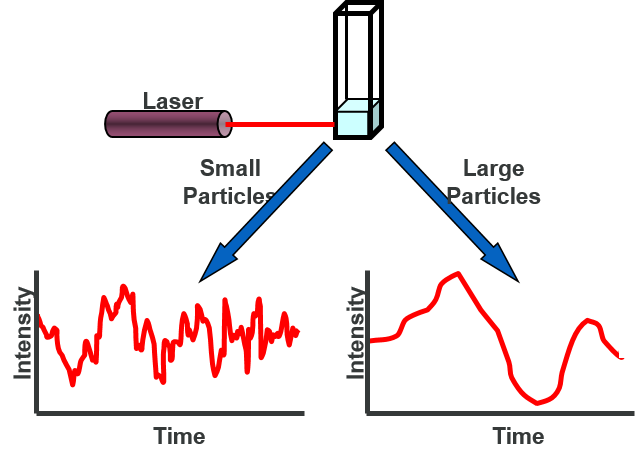

Dynamic light scattering dls software#
The software is designed to be versatile and rich in features without compromising ease of use. This technique is very demanding on the sensitivity and stability of the whole system, and requires that every element of the design is optimized to ensure accuracy and repeatability. Dynamic Light Scattering (DLS) is a commonly used term to describe a technique which measures the particle size and estimated distribution of submicron. From this the weight average molecular weight and second virial coefficient can be calculated, which provides a measure of protein solubility. What is DLS used for Dynamic light scattering helps determine whether a sample is selective for a single oligomeric state, or if problems such as impurity or. The scattering intensity of a number of concentrations of the sample is measured, and used to construct a Debye plot. Static Light Scattering is used to determine the molecular weight of proteins and polymers. This enables the calculation of electrophoretic mobility and from this the zeta potential and zeta potential distribution. This velocity is measured using a patented laser interferometric technique called M3-PALS (Phase analysis Light Scattering). In particle size measurements using dynamic light scattering (DLS), a laser beam is scattered on very small, finely dispersed particles (usually < 1 m) in a. An electric field is applied to a solution of molecules or a dispersion of particles, which then move with a velocity related to their zeta potential. Laser Doppler Micro-electrophoresis is used to measure zeta potential. The Microrheology option uses the DLS measurement of tracer particles to probe the structure of dilute polymer and protein solutions. The sensitivity of some modern systems is such that it can also now be used to measure the size of. Theoretical Basis for Light Scattering Light scattering is a phenomenon that is observed when light, usually monochromatic laser light, is scattered by randomly oriented objects in solution. Dynamic Light Scattering, sometimes referred to as Photon Correlation Spectroscopy or Quasi-Elastic Light Scattering, is a technique classically used for measuring the size of particles typically in the sub-micron region, dispersed in a liquid. Measurement of size as a function of concentration enables the calculation of kD, the DLS interaction parameter. Dynamic Light Scattering (DLS) is a measurement technique that provides a fast and simple method for submicron and nanoparticle sizing.
Dynamic light scattering dls full#
DLS measures the diffusion of particles moving under Brownian motion, and converts this to size and a size distribution using the Stokes-Einstein relationship. Dynamic Light Scattering (DLS) or Photon Correlation Spectroscopy (PCS) or Quasi-elastic Light Scattering (QELS) Determining the Full Particle Size. Description: Dynamic Light Scattering (DLS) is one of the most popular light scattering techniques because it allows particle sizing down to 1 nm diameter. The Zetasizer Nano ZSP incorporates three techniques in a single compact unit, and has a range of options and accessories to optimize and simplify the measurement of different sample types.ĭynamic Light Scattering is used to measure particle and molecule size.


 0 kommentar(er)
0 kommentar(er)
